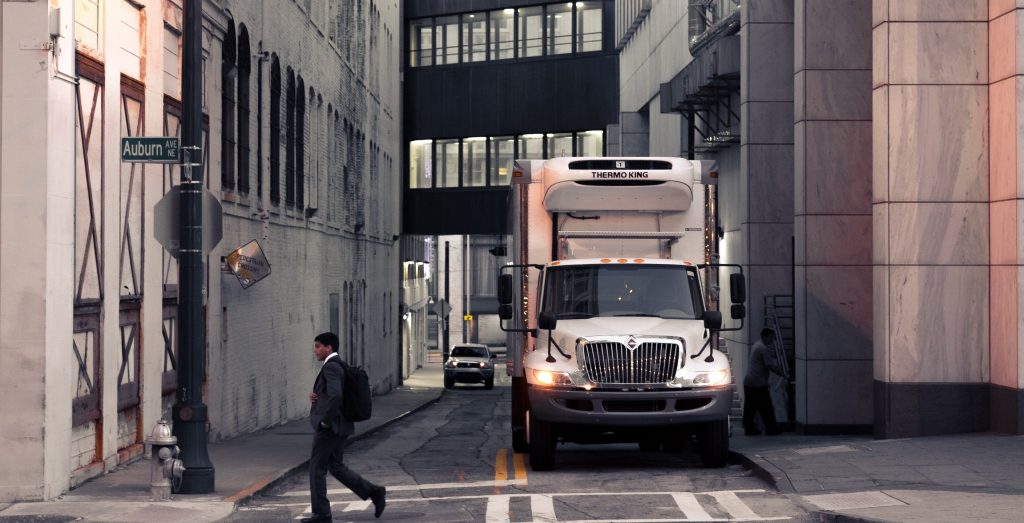Are Teenage Truck Drivers the Answer to the Truck Driver Shortage?
Trucking groups are backing legislation (DRIVE Safe Act) that would allow truck drivers younger than 21 years old to cross state borders to help fill a driver shortage, as safety groups argue younger drivers are more likely to be involved in fatal accidents and that the bill’s training requirements are inadequate.
Most states allow 18-year-olds to obtain a commercial driver’s license, yet federal law prevents them from driving outside state borders until they are 21.
DRIVE Safe Act – H.R.5358
But legislation introduced in March by Republican Reps. Duncan Hunter of California and Trey Hollingsworth of Indiana called the Developing Responsible Individuals for a Vibrant Economy Act would allow teens to drive between states after completing a 400-hour training program.
Republican Rep. Duncan Hunter of California
Enjoying our insights?
Subscribe to our newsletter to keep up with the latest industry trends and developments.
Stay Informed“Unfortunately, we see many young Americans faced with the choice of either taking on thousands of dollars in college debt or entering into a job market with grim prospects for untrained workers,’’ Hunter said. “This is a common-sense approach that creates job opportunities for younger workers and provides a vital resource to America’s trucking industry that is critical in supporting our growing domestic economy.’’
Under the legislation, younger drivers would have to meet the requirements to obtain a commercial driver’s license. Then, they would receive training that would include two probationary periods. While on probation they would be permitted to drive outside state lines only when accompanied by an experienced driver.
The teenage truck drivers would have to complete a 120-hour probationary period of “on-duty time,” in which 80 of those hours must be spent driving. Then, they would have to undergo a second 280-hour probationary period when the teen would drive for a total of 160 hours.
Truck Driver Shortage
Companies and organizations including UPS, the International Foodservice Distributors Association, and American Trucking Associations (ATA) support the legislation, referred to as the DRIVE Safe Act, because of the additional training, and argue it would expand the recruitment pool to help alleviate a truck driver shortage.
ATA predicted last year the industry would lack about 50,000 truck drivers by the end of 2017 and 174,000 drivers by 2026 if current trends continue.
The group also has argued that over the next 10 years, 890,000 new truck drivers must be brought into the industry, given certain factors such as retirement, retention and demand.
“It’s still a challenge for our industry to recruit talent,” said Sean McNally, vice president of public affairs and press secretary for ATA. “By bringing the age of interstate driving down from 21 to 18, it is our hope that in addition to providing better training and providing a pathway to a career for individuals, that we’ll be able to capture that gap.’’
Younger Drivers are More Likely to be involved in Fatal Crashes
However, safety groups such as Advocates for Highway and Auto Safety are fighting the legislation because younger drivers are more likely to be involved in fatal crashes. In 2015, drivers between the ages of 16 and 19 were nearly three times more likely to be involved in a fatal accident than those older than 20, according to the Insurance Institute for Highway Safety.
Peter Kurdock, director of regulatory affairs at Advocates for Highway and Auto Safety, also said that drivers of large trucks between the ages of 19 to 21 were six times more likely to be involved in fatal accidents compared to the overall rate for all truck drivers, according to a 1991 study that was published in the public health journal Accident Analysis & Prevention. Those under the age of 19 were four times more likely to be involved in fatal crashes than the overall rate.
Kurdock says the training requirements in the legislation are not adequate to ensure a new truck driver can properly operate a commercial motor vehicle, adding that they’re not a substitute for experience and would not alleviate safety concerns.
“We are talking about significant public safety concerns with this bill,” Kurdock said.
During the probationary training periods, teenage truck drivers must meet certain benchmarks, in which they are evaluated on matters including speed and space management, right and left turns, and night driving. But meeting the benchmarks is subject to the employer’s satisfaction, which Kurdock said is cause for concern.
“It’s up to the carrier if one of these younger drivers has a moving violation, or a speeding ticket, or a crash, whether they continue to allow them to operate the truck,” Kurdock said. “Those are some really large flaws if you, like us, are looking from a public safety lens.”
Industry Struggling to Keep Truck Drivers
Additionally, Kurdock pushes back on claims the trucking industry is facing recruitment challenges. He says the industry actually is struggling to keep drivers.
“It doesn’t matter how many kids they sucker into driving these trucks; it’s not going to relieve the shortage because they’re all going to leave,” Kurdock said. “None of these people stay in this job because the industry refuses to change the working conditions and make it a job that people want to stay in.”
Kurdock said he believes other truck driver groups will become vocal in opposing the legislation.
“I think you’re going to hear from a lot of groups that have serious concerns with this bill,” Kurdock said.
(This article was first reported by the Washington Examiner)


























Truck drivers do horrible shifts, sometimes even 24-hour shifts in order to make send meet and are treated horribly by the industry and carriers. We have to do better and work together with drivers so as to not face a transportation and shipping disruption.